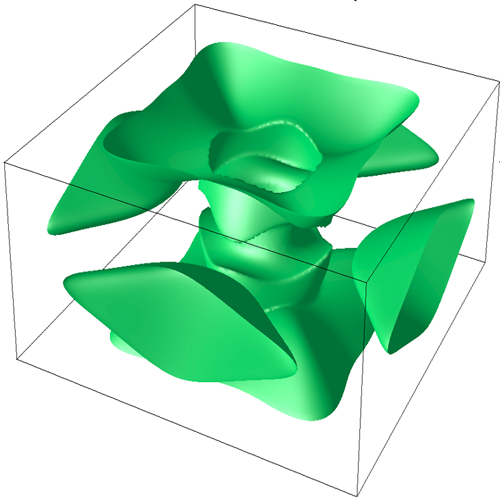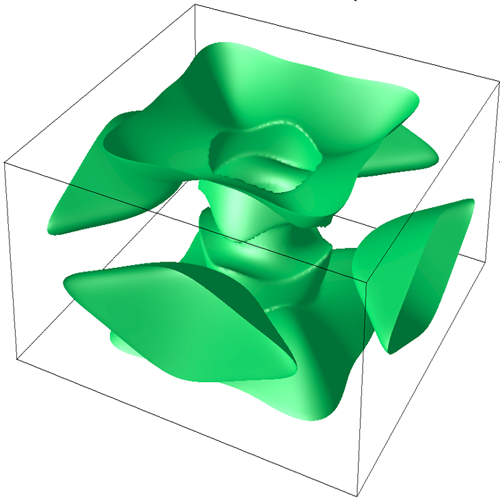Uncovering hidden order
At low temperature the uranium compound exhibits a transition to a mysterious phase. The origin of this phase has not yet been uncovered, even after 25 years of intensive investigations, and it has therefore become known as the “hidden order.”
In a paper appearing in Physical Review B, Peter Oppeneer and colleagues from Uppsala University in Sweden, and collaborators at Los Alamos National Laboratory and Leiden University in the Netherlands, report state-of-the-art electronic structure calculations, including dynamical mean-field theory, that offer fresh insight into the nature of the electrons that are responsible for the hidden order. Through extensive comparison of measured and calculated properties, the study reveals that at low temperatures the uranium electrons are primarily itinerant rather than localized. The calculations provide a detailed picture of where in reciprocal space the defining electrons are positioned, i.e., the Fermi surface. Thus a Fermi surface of , in conjunction with a certain type of symmetry breaking based on antiferromagnetic fluctuations, has now been predicted that brings the unraveling of the hidden-order mystery closer. The researchers propose that spin fluctuations are the unexpected source of the hidden order. These fluctuations are predicted to couple strongly to a Fermi surface instability, which then drives the phase transition. Further experiments to test this interpretation are expected. –Anthony Begley





